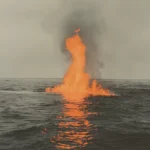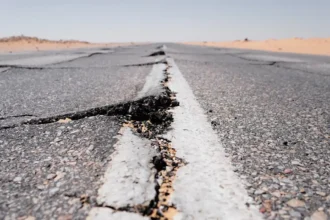Indonesia has a big plan to change how it makes electricity in the coming years, with nuclear power playing a key role. According to Reuters, the country wants to add 103 gigawatts (GW) of new power by 2040 – that’s enough electricity to power millions of homes and businesses.
The country is moving away from its heavy dependence on coal, which currently makes up more than half of its energy. Right now, Indonesia has about 90 GW of total power capacity, with less than 15 GW coming from clean sources.
The New Power Mix
- 75 GW from clean sources (solar, wind, geothermal, and biomass)
- 10 GW from nuclear power plants
- 18 GW from natural gas
According to PowerLine, this balanced approach will help Indonesia reduce pollution while still having reliable electricity to power its growing economy. The country aims to increase its economic growth from 5% to an ambitious 8%.
Nuclear Plans and Locations
According to AInvest, Indonesia’s first nuclear plant is set to start in 2032 with a small 250 megawatt facility, growing to 3 GW by 2035 and reaching 9 GW by 2040. This is a huge step for a country with no existing nuclear plants.
Hashim Djojohadikusumo, who serves as special envoy for energy and climate to President Prabowo Subianto, is leading these efforts to bring nuclear energy to Indonesia. The government is talking with several potential investors.
- Rosatom (Russia)
- China National Nuclear Corporation
- Rolls Royce (UK)
- EDF (France)
- NuScale Power Corporation (USA)
The western parts of Indonesia could get larger nuclear plants (around 1 GW each), while the eastern islands might use floating small nuclear reactors (up to 700 MW) that can be placed on water.
Timeline and Investment
Indonesia expects to award contracts for these projects within the next five years, with a goal of reaching carbon neutrality (balancing out harmful emissions) before 2050.
According to Economic Times, state utility PLN estimates a massive investment of $110 billion is needed just for part of this plan – building 30 GW of renewable power and 49,200 km of power lines between 2024 and 2033.
Safety Challenges
Building nuclear plants in Indonesia faces serious challenges because the country sits in what experts call the “Pacific Ring of Fire” – an area with many earthquakes and volcanic eruptions.
- 5,000-6,000 earthquakes happen in Indonesia each year
- The country has 127 active volcanoes
- Over 40% chance of a damaging tsunami in the next 50 years
Despite these risks, Indonesia is moving forward with its plan, taking what officials describe as a careful approach – phasing down fossil fuels gradually rather than stopping them completely.
As you watch these developments unfold, remember that Indonesia’s energy choices will affect not just its own people but could provide a model for other growing economies trying to balance development with cleaner energy.











